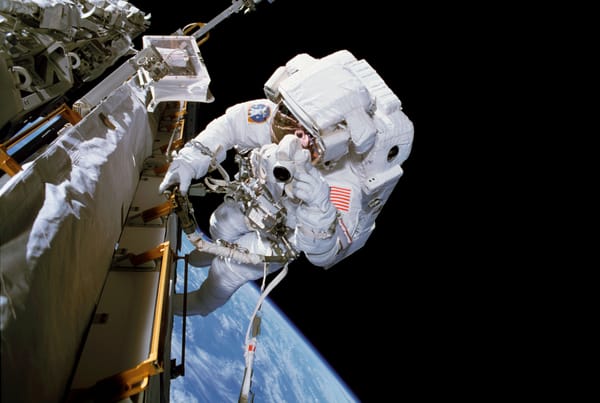A mystery on Venus
Scientists have reported that they have found abnormal amounts of a toxic compound called phosphine in Venus’s atmosphere, at 55-80 km altitude. This story is currently all over my Twitter feed because one way to explain this unexpected abundance is that microbes could be producing this gas – as we know them to do on Earth – in oxygen-starved conditions. Nonetheless, we shouldn’t lose sight of the fact that the real proposition here is that there is too much phosphine, not that there is a potential sign of life.
While some scientists have been issuing words of caution along similar lines, others have cut to the other end, writing that making sense of this discovery doesn’t require “alien microbes” at all because chemistry offers possibilities that are much more likely to be the case – and verging on the argument that this possibly can’t be aliens. Between them is the option to keep an open mind, so difficult these days – between an Avi Loeb-esque conception of the universe in which the role of creativity is overemphasised to dream up plausible (but improbable) theories and a hyper-conservative reality that refuses to admit new possibilities because we haven’t plumbed the depths of what we already know to be true enough.
Nonetheless, this is where it is best to stand today – considering we simply don’t know enough about the Venusian atmosphere to refute one argument or support the other. At the same time, I would like to make a finer point. In November 2014, I had published a post explaining the contents of a scientific paper published around then, describing how an exotic form of carbon dioxide could host life. As I wrote:
At about 305 kelvin and 73-times Earth’s atmospheric pressure, carbon dioxide becomes supercritical, a form of matter that exhibits the physical properties of both liquids and gases. … As the study’s authors found, some enzymes were more stable in supercritical carbon dioxide because it contains no water. The anhydrous property also enables a “molecular memory” in the enzymes, when they ‘remember’ their acidity from previous reactions to guide the future construction of organic molecules more easily. The easiest way – no matter that it’s still difficult – to check if life could exist in supercritical carbon dioxide naturally is to … investigate shallow depths below the surface of Venus. Carbon dioxide is abundant on Venus and the planet has the hottest surface in the Solar System. Its subsurface pressures could then harbour supercritical carbon dioxide.
When we do muster as much caution as we can when reporting on recently published papers presenting evidence of new mysteries, we evoke the possibility of ‘unknown unknowns’ – things that we don’t know we don’t know, as perfectly illustrated in the case of carbon monoxide on Titan. At the same time, are we aware that ‘unknown unknowns’ also make way for the possibility of alien life-forms with biological foundations we may never conceive of until we encounter a real, live example? I am not saying that there is life on Venus or elsewhere. I am saying that the knowledge-based defences we employ to protect ourselves from hype and reckless speculation in this case could just as easily work against our favour, and close us off to new possibilities. And since such caution is often considered a virtue, it is quite important that we don’t indulge it.
There is a wonderful paragraph in a paper from 2004 that I’m reminded of from time to time, when considering the possibility of aliens for a science article or a game of Dungeons & Dragons:
The universe of chemical possibilities is huge. For example, the number of different proteins 100 amino acids long, built from combinations of the natural 20 amino acids, is larger than the number of atoms in the cosmos. Life on Earth certainly did not have time to sample all possible sequences to find the best. What exists in modern Terran life must therefore reflect some contingencies, chance events in history that led to one choice over another, whether or not the choice was optimal.



